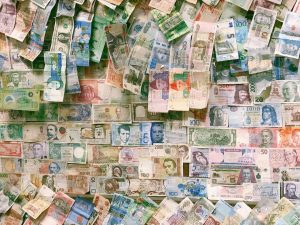Forex trading is an exciting and challenging field that requires a good understanding of the market and a range of analytical tools. One of the most important tools in Forex trading is statistics. Statistics can help traders to make informed decisions, identify patterns, and predict future market movements. In this article, we will explore how to apply statistics in Forex trading.
What is Statistics?
Statistics is a branch of mathematics that deals with the collection, analysis, interpretation, and presentation of data. In Forex trading, statistics can be used to analyze market trends, identify patterns, and make predictions about future market movements. Statistical analysis can help traders to make more informed decisions, reduce risk, and increase profits.
Types of Statistical Analysis
There are two main types of statistical analysis that can be used in Forex trading: descriptive analysis and inferential analysis.
Descriptive analysis involves the collection, organization, and presentation of data. This type of analysis is useful for summarizing large amounts of data and identifying patterns or trends. Descriptive analysis can be used to create charts, graphs, and other visual aids that help traders to understand market movements.
Inferential analysis involves using statistical methods to make predictions about future market movements based on past data. This type of analysis is more complex than descriptive analysis and requires a good understanding of statistical techniques. Inferential analysis can be used to create models that predict future market movements, which can be very useful for traders.
How to Apply Statistics in Forex Trading
There are several ways to apply statistics in Forex trading, including:
1. Technical Analysis – Technical analysis involves using charts, graphs, and other visual aids to analyze past market movements and identify patterns. Technical analysts use statistical methods to identify trends, support and resistance levels, and other key indicators that can help traders make informed decisions.
2. Fundamental Analysis – Fundamental analysis involves analyzing economic, political, and social factors that affect currency prices. Statistical data such as GDP, inflation rates, and interest rates can be used to analyze the strength of an economy and predict future market movements.
3. Risk Management – Statistical analysis can be used to manage risk in Forex trading. Traders can use statistical methods to identify the probability of a particular trade being successful and adjust their position size accordingly.
4. Predictive Modeling – Predictive modeling involves using statistical methods to create models that predict future market movements. These models can be based on historical data or other factors such as economic indicators. Predictive modeling can be a powerful tool for traders who want to make informed decisions based on data.
Conclusion
Statistics is an essential tool in Forex trading. It can be used to analyze market trends, identify patterns, and predict future market movements. Traders who understand statistical analysis have an advantage in the market and can make more informed decisions. However, it is important to remember that statistical analysis is only one of many tools available to traders. It should be used in conjunction with other methods such as technical and fundamental analysis to make the best decisions possible.





